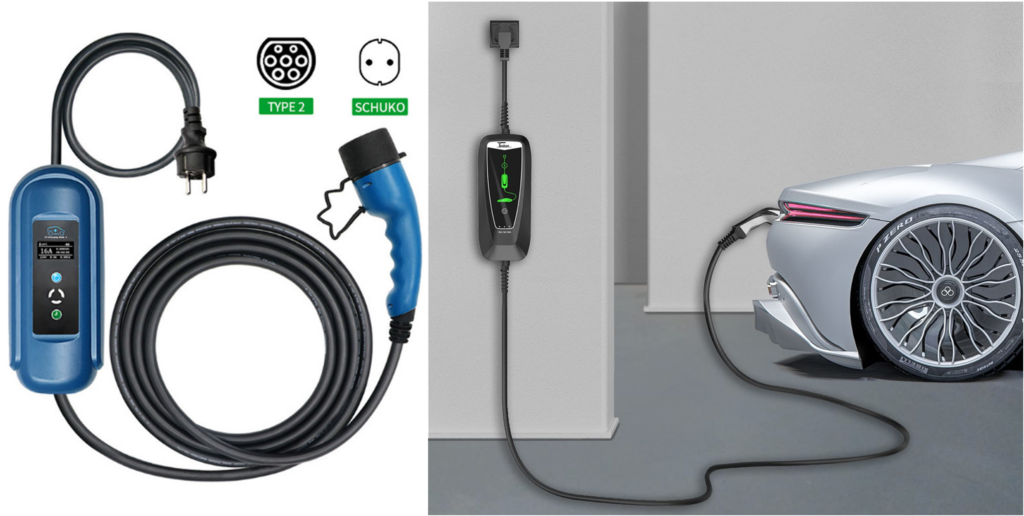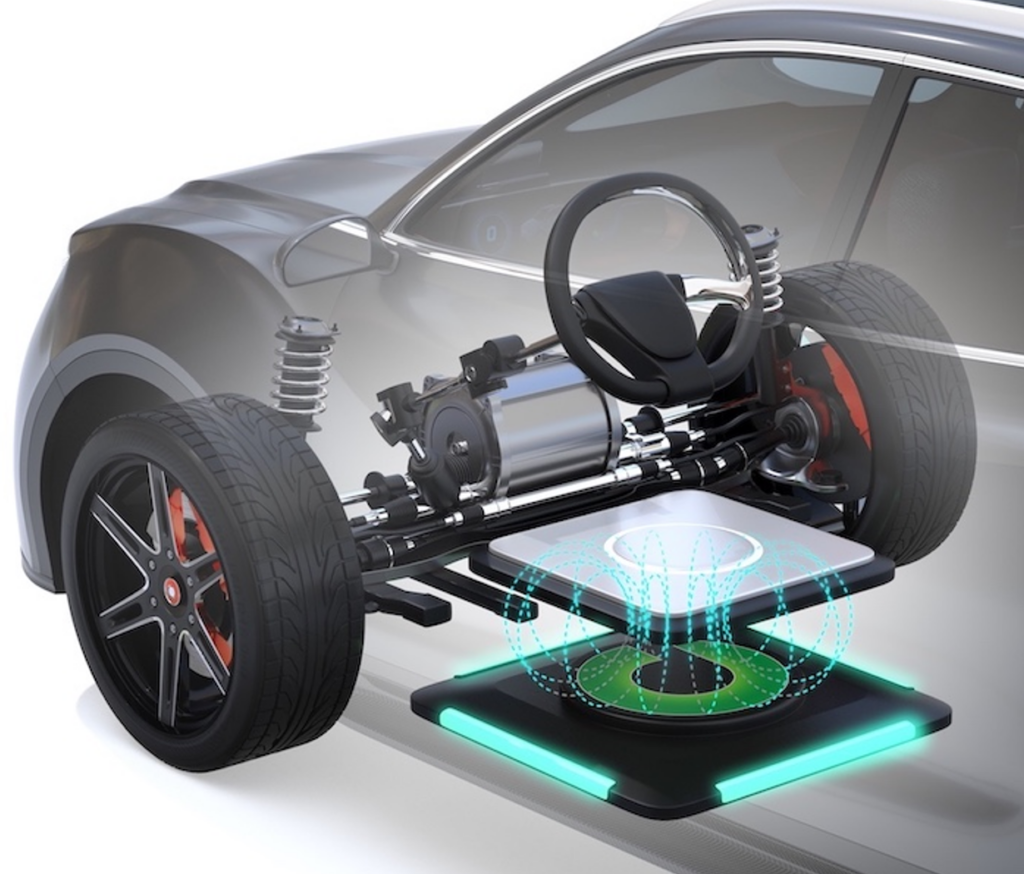Introduction to EV Charging: A Beginner’s Guide
As the world embraces the shift towards sustainable transportation, Electric Vehicles (EVs) are becoming increasingly popular. Central to the adoption of EVs is the infrastructure that supports them, particularly EV Charging. In this article, we will delve into the basics of EV charging and explore the different types of charging methods available.
What is EV Charging?
EV Charging is the process of replenishing the energy in the battery of an EV. Unlike traditional gasoline-powered vehicles, EVs rely on electricity as their primary source of energy. Charging an EV is a pivotal aspect of its functionality, determining the convenience and practicality of electric mobility.
Categories of EV Charging:
There are three primary categories of EV charging:
- AC charging
- DC charging
- Wireless charging.
1. AC charging:
AC Charging refers to the process of charging, when EV is connected to an AC power source, which could be a standard socket or an AC charging station.
There are four charging modes (combining AC and DC) based on how the EV is connected to the power source. Among them, Mode-1, 2, and 3 are for AC, and the Mode-4 is for DC.
Let’s delve into the details of the AC charging modes below:
1.1. Mode-1 Charging: (AC Charging)
Mode-1 charging is the simplest form, where the EV is directly plugged into a standard socket using an extension cord.
How it works:
- EV is connected to the socket, and the On-Board Charger (OBC) detects the voltage.
- OBC then converts AC to DC, charging the battery.
Pros:
- No need for additional devices between EV and mains supply.
Cons:
- EV lacks the information about socket’s rating. If the EV attempts to draw a higher power than the socket rating, potentially due to the OBC in the EV being designed for a higher rating, it may pose a fire hazard by overheating the power socket.
- Without a Residual Current Device (RCD) in the home, it’s impossible to detect phase or neutral-to-ground faults in EV during charging, posing an electric shock hazard.
- Charging power must be kept at a minimum to prevent the overheating of socket.
Typical power level:
- The typical maximum power is 1.0 kW to 2.3 kW (6 A-10 A, 230 V).
Applications:
- Suitable for low-power EVs, such as electric scooters and electric bikes, where smaller battery capacities are used, and high charging power is not necessary.
- This method is not used for electric cars or larger vehicles due to their higher battery capacities, demanding high power for overnight charging and also due to safety concerns.

1.2. Mode-2 Charging: (AC Charging)
In Mode 2 charging, the EV is connected to a standard socket (with an earth/ground connection) using a specialized cable equipped with an In-Cable Control and Protection Device (IC-CPD). Typically included with the purchase of the EV, these IC-CPDs are also readily available in the market.
Functions of IC-CPD include:
- Validating the connection of the charging cable to the EV before supplying voltage.
- Allowing users to choose the current limit based on the socket (8A, 10A, 12A, or 16A). Some IC-CPDs may have a fixed rating.
- Communicating the current limit to the EV.
- Monitoring phase or neutral-to-ground faults in the EV.
- Monitoring the plug temperature connected to the socket.
- Disconnecting the supply to the EV in the following situations:
- If the EV draws higher current than communicated.
- If a phase or neutral-to-ground fault is detected (for shock protection).
- If the plug temperature exceeds a certain limit.
How it works:
- Once cable is connected to EV and socket, then IC-CPD communicates the current limits and its readiness to provide voltage.
- EV communicates back when it is ready for charging.
- IC-CPD provides the voltage to EV and OBC in the EV starts converting the AC to DC and charges the battery.
Pros:
- Allows safe charging of EV.
- Charging cable can be carried in the car, enabling charging at any domestic socket.
- Smart IC-CPDs can provide the connection to mobile phone which allows to schedule charging and remote control of charging.
Cons:
- Low power rating causing longer charging times.
- Only supports single phase charging.
- Not suitable for public places with limited parking time.
Typical power level:
- The typical maximum power is 3.5 kW (16 A, 230 V).
Applications:
- Ideal for short distance commuting EVs (city cars, Plug-in Hybrid Vehicles), making overnight charging sufficient to meet daily needs.
- Practical for residential settings without dedicated charging infrastructure, and users can rely on standard electrical sockets for occasional charging.


1.3. Mode-3 Charging: (AC Charging)
In Mode-3 charging, the AC charging station is either hardwired to the AC mains or connected to an industrial socket that supports higher currents. This is the most preferred means of EV charging. Charging cable can be either permanently connected to charging station or it can be a detachable cable.
Functions of AC charging station include:
- Validating the connection of the charging cable to the EV before supplying voltage.
- Allowing users to choose the current limit.
- Communicating the current limit to the EV.
- Monitoring phase or neutral-to-ground faults in the EV.
- Disconnecting the supply to the EV in the following situations:
- If the EV draws higher current than communicated.
- If a phase or neutral-to-ground fault is detected (for shock protection).
How it works:
- Once cable is connected to EV, then AC charging station communicates the current limits and its readiness to provide voltage.
- EV communicates back when it is ready for charging.
- AC charging station provides the voltage to EV and OBC in the EV starts converting the AC to DC and charges the battery.
Pros:
- Enables safe EV charging.
- Supports high-power charging.
- Supports three-phase charging.
- Smart charging stations can connect to mobile phones, enabling scheduled charging and remote control (ideal for charging during off-peak hours).
- Well-suited for public charging applications.
Cons:
- Expensive compared to Mode-2.
Typical power level:
- The typical maximum power is 7 kW to 11kW (32 A – 48 A in single phase, 16 A per phase in three phase, 230 V). Some AC charging stations can support 19 kW.
Applications:
- Ideal for EVs with higher battery capacities (long range Electric cars) that require high power charging.
- Suitable for public charging stations, providing higher power for shorter charging times.


2. DC charging:
DC Charging refers to the process of charging, when EV is connected to a DC charging station.
In continuation the modes mentioned above, DC charging falls under the Mode-4 category.
Let’s explore the details of Mode-4 charging below:
2.1. Mode-4 Charging: (DC Charging)
In Mode-4 charging, the conversion from AC to DC takes place externally, within the DC charging station. This approach bypasses the EV’s OBC, allowing the EV battery to be charged directly. These DC charging stations are permanently connected to the AC grid, with the charging cable also being permanently connected to the station.
Functions of DC charging station include:
- AC to DC Conversion.
- Validation of the charging cable connection to the EV before supplying power.
- Communication of current, voltage, and power limits to the EV.
- Providing the charging current and voltage in accordance with the EV’s request.
- Monitoring the isolation resistance of the DC power lines.
- Stopping the charging process upon detection of faults, such as isolation faults in the DC power lines.
How it works:
- Upon cable connection to the EV, the DC charging station communicates the current, voltage, and power limits, and its readiness to provide power.
- The EV responds by communicating its limits and readiness for charging.
- The DC charging station initiates the charging process.
Pros:
- Enables safe EV charging.
- Supports high-power (fast) charging.
- Ideal for public charging applications.
Cons:
- Very expensive infrastructure investment.
Typical power level:
- For home applications: approximately 15 kW (500 V DC).
- For public charging: ranging from 50 kW to 350 kW (500 V DC to 1000 V DC).
Applications:
- Ideal for public charging stations (fast charging), offering higher power for shorter charging times.
- While not common for home charging presently, it is gradually gaining popularity.


In addition to Mode-4 DC charging, another notable method of DC charging employs a pantograph, primarily utilized in public transport applications such as city buses. The charging process is similar to that of Mode-4 DC charging, with the key distinction being the contact made with the DC source through a pantograph rather than a conventional charging cable. Pantograph charging boasts a capacity of up to 1 MW, facilitating rapid charging for city buses, ensuring they are swiftly ready for their scheduled trips. This charging technique is commonly referred to as “Opportunity Charging”.

3. Wireless Charging:
Wireless charging is the process of transferring electric energy from a charging station to an EV without the need for physical cables. This technique, commonly known as inductive charging or wireless power transfer, relies on electromagnetic fields to transmit energy between two key components: a charging pad (or plate) installed on the ground and a receiver coil integrated into the electric vehicle.
How it works:
- When the EV is parked on the charging pad and properly aligned, the EV and charging station exchange the information, including current, voltage, power limits, and their readiness to provide power. This communication occurs wirelessly.
- Charging initiation is performed by the charging station, generating the necessary high-frequency AC electromagnetic fields (from charging pad) for wireless power transfer.
- The AC electromagnetic field induces voltage in the receiver coil on the underside of the EV. Subsequently, the OBC in the EV converts the AC to DC, effectively charging the vehicle’s battery.
Pros:
- Wireless charging eliminates the need for cable plugging and unplugging, offering a hassle-free charging experience and increased user convenience.
Cons:
- It is less efficient than traditional wired charging, making it less suitable for high-power charging.
- The infrastructure for wireless charging tends to be more expensive than traditional charging setups.
Typical power level:
- The typical maximum power is 20 kW.
Applications:
- Wireless charging is suitable for locations such as taxi stands and bus stations, where vehicles often wait for passengers.
- Wireless charging has not yet gained widespread popularity primarily due to its lower charging power capabilities.


In closing, the landscape of EV charging is dynamic and transformative. As technology advances and the world accelerates towards a cleaner future, the ways we charge our EVs will continue to evolve. From the simplicity of Mode-1 charging to the sophistication of wireless charging, each method serves a purpose in meeting the diverse needs of EV users.
Embracing these charging technologies is not just about convenience; it’s a collective step towards reducing our carbon footprint and creating a sustainable future. As charging infrastructure expands, and innovations emerge, the journey towards electric mobility becomes more accessible and appealing.
EV Charging Explained – Everything you need to know about Electric Vehicle Charging